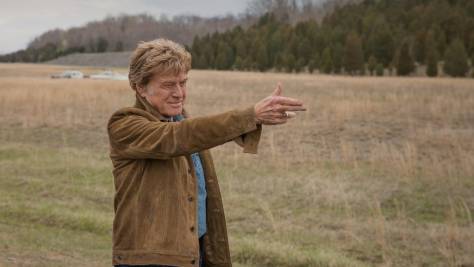By Dennis Hartley
(Originally posted on Digby’s Hullabaloo on September 18, 2010)

In November 1979, police sharpshooters ambushed and killed France’s “Public Enemy #1” as he drove down a busy Parisian boulevard with his girlfriend (who was wounded, but survived). Although this violent dispatch was, in essence, a public execution without trial, very few grieved for the demise of murderer, bank robber, kidnapper, and serial prison escapee Jacques Mesrine.
Over the course of his 20 year “career”, Mesrine managed to wreak major havoc, not only in his native France, but in Canada and the U.S. as well. A folk hero to some, Mesrine fancied himself to be a sort of underworld Renaissance man-master of disguise, self-styled “revolutionary”, and author.
If there was one thing he loved more than the thug life, it was watching and reading about himself in the media (he once nearly killed a French journalist for writing an unflattering article). I suspect that he would have been especially gratified to have lived to see the day that he became the subject of an epic crime film diptych, currently in limited release in the U.S.
Director Jean-Francois Richet and his co-writer Abdel Raof Dafri adapted Mesrine’s autobiography, L’instinct de mort, into two films-Mesrine: Killer Instinct and Mesrine: Public Enemy #1. With a combined running time of 4 hours, you are going to need a dynamic leading man to keep your audience riveted, and the edgy, explosive Vincent Cassel (La haine, Eastern Promises) proves up to the task.
Despite having the luxury of a broad canvas, Richet doesn’t linger much on the formative years; opting instead to kick off with a brief glimpse of Mesrine’s hitch in the French army, while serving in the Algerian conflict. In a scene fraught with uncompromising brutality (setting the tone for the films) Mesrine beats a captured Algerian insurgent senseless, at the behest of his commanding officer.
When this treatment fails to yield the desired information from the dazed prisoner, the man’s sister is paraded out, and Mesrine is commanded to escalate the violence to its inevitable denouement. For the only time in either film, Mesrine appears to balk, reticent to follow these orders; suggesting, for one infinitesimal moment, that he may have a conscience. Once he pulls the trigger, however, Mesrine knows that he has irreversibly crossed to the dark side.
Does this vignette infer that the military breeds sociopaths, or that it perhaps attracts them? It is left open to interpretation. There is a lot left open for interpretation throughout, regarding what it was that made Mesrine tick. With the exception of the aforementioned scene, we are presented with Mesrine the fully formed career criminal, straight out of the box.
He gets out of the army, meets and marries his second wife, a beautiful Spanish woman (Elena Anaya), and takes a halfhearted stab at a few straight jobs. However, once he falls under the sway of a powerful local gangster (Gerard Depardieu) he comes to realize his true calling-taking what he wants, when he wants, and by any means necessary.
The first film follows his activities in Europe through the late 60s and then his North American crime sprees with partner Jean-Paul Mercier (Paul Dupuis) from ‘69-‘72, including bank robberies and several murders.
The second film covers Mesrine’s return to France in 1972, when he picked up where he had left off-participating in bank robberies, kidnappings, and brazen jailbreaks, which finally earned him his “public enemy #1” moniker from the exasperated French law enforcement authorities. The second film is a little more compelling than part one, as it provides an interesting nemesis for Mesrine, commissioner Broussard (Olivier Gourmet).
The two men have a sparring relationship of begrudging mutual respect, much like the (fictional) characters played by Al Pacino and Robert deNiro in Michael Mann’s Heat. Part two also benefits from the presence of one of my favorite French actresses, Ludivine Sagnier (as Mesrine’s girlfriend at the time of his death), who brings a simmering blend of earthy sexuality and dangerous volatility to her roles that reminds me of Ava Gardner (or the young Ellen Barkin).
Taken as a whole, the 4-hour narrative begins to run out of steam about ¾ of the way through, mostly due to the rote sequencing and repetitive nature of Mesrine’s exploits; he robs a bank, gets caught, goes to jail, breaks out of jail, robs more banks, gets caught…well, you get the picture. Cassel’s performance, as good as it is, teeters on the edge of becoming a one-note acting exercise.
Maybe we didn’t need to inventory/reenact every crime the man ever committed? I could have used a bit more insight into Mesrine’s motivations. That being said, Richet is a promising filmmaker, showing a particular penchant for kinetic action sequences, and his recreation of France’s 1970s sociopolitical milieu is quite canny (I was reminded at times of Fred Zimmerman’s Day of the Jackal).
So is this a recommendation? If you are a true-crime buff, I think you will like this. The real Mesrine, repellent as his actions were, was a fascinating character, and it is mind-blowing what he got away with, and for how long (especially considering how much he enjoyed the spotlight, courting the media whenever he got the opportunity).
And how was he able to escape so many times? Couldn’t they figure out a way to keep this guy locked up, especially after the first several escapes and re-apprehensions? Maybe if the director had asked himself some of these questions, the film(s) could have been a bit more compelling? Well, you know what the French say… C’est la vie.









